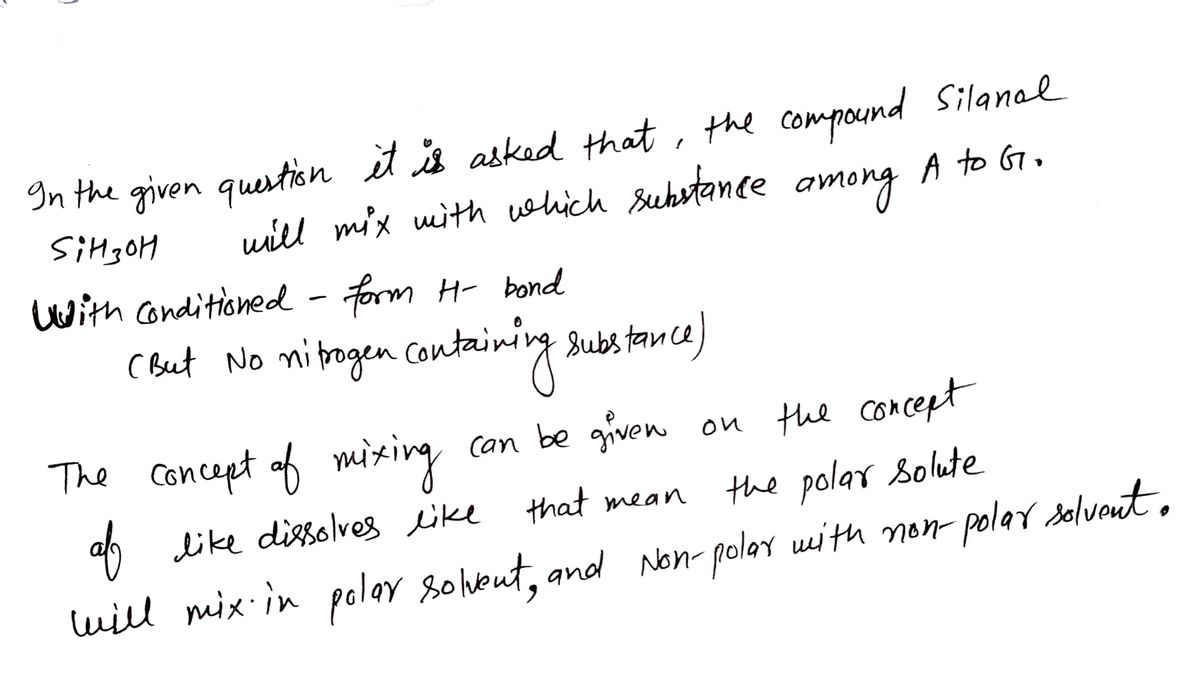A chemical engineering student is testing out various liquids in her lab. She has seven substances: • Substance A: C6H14 (hexane). It is non- polar, mixing well with oil but not with water. · Substance B: H2O2 (hydrogen peroxide). It contains two O-H bonds, and does not mix with oil or hexane. · Substance C: C2H5OH (ethanol). Ethanol mixes well with water and hydrogen peroxide. • Substance D: CH3CONH2 (acetamide). It has two N-H bonds. • Substance E: CH3COOH (acetic acid). It mixes well with water, has an O-H bond, and is polar. · Substance F: (CH3)2CO (acetone). There are no O-H bonds, though it is polar. · Substance G: C2H4(NH2)2 (ethylendiamine). Multiple N-H bonds, and mixes well with some polar substances. She needs a substance that will mix well with silanol, SIH3OH, shown below. For safety reasons, she knows it cannot contain nitrogen and it must be able to do hydrogen bonding with other substances. Which substances are okay to use, according to this information?
States of Matter
The substance that constitutes everything in the universe is known as matter. Matter comprises atoms which in turn are composed of electrons, protons, and neutrons. Different atoms combine together to give rise to molecules that act as a foundation for all kinds of substances. There are five states of matter based on their energies of attraction, namely solid, liquid, gases, plasma, and BEC (Bose-Einstein condensates).
Chemical Reactions and Equations
When a chemical species is transformed into another chemical species it is said to have undergone a chemical reaction. It consists of breaking existing bonds and forming new bonds by changing the position of electrons. These reactions are best explained using a chemical equation.



Trending now
This is a popular solution!
Step by step
Solved in 3 steps with 2 images









